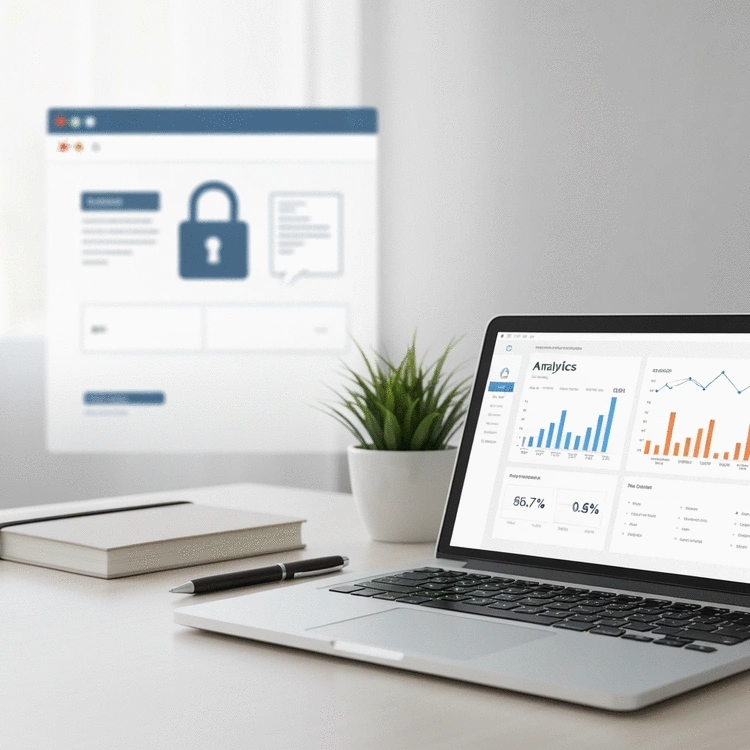How well do you understand the hidden elements lurking within your website? These often-overlooked features can make or break your SEO strategy. Let's delve into the critical insights you need to navigate this complex terrain.
What You Will Learn
- Hidden content must be visible to users to be properly indexed by search engines.
- Always ensure your hidden elements enhance user experience and do not mislead users.
- Google values transparency; hidden content should add genuine value and align with user intent.
- Regular audits of hidden content can help maintain compliance with SEO best practices and improve site credibility.
- Use clear labeling and optimize hidden sections for mobile to improve user engagement.
- Effective use of hidden content can positively impact your site's visibility on search engine results pages (SERPs).
The Dual Nature of Hidden Content in SEO
Hidden content can be a powerful tool or a significant risk. This visual highlights the key implications, Google's interpretation, and best practices for responsible use.
Understanding Hidden Content and Its SEO Implications
In the vast and ever-shifting landscape of SEO, understanding hidden content is crucial for anyone looking to optimize their website effectively. Hidden content refers to information that is present on a webpage but is not visible to the user until specific actions are taken, such as clicking or hovering. This can include dropdown menus, accordions, and other interactive elements designed to enhance user experience while keeping the interface clean.
But what does this mean for search engine optimization? Well, hidden content can play a dual role: it can either enhance your site's functionality or lead to penalties if misused. As the founder of The Stone Builders Rejected, I've seen firsthand how the balance between user experience and SEO considerations can be a tricky one!

What Does Hidden Content Mean in the Context of SEO?
Hidden content, in the SEO context, generally refers to elements that search engines may not index because they are not visible to users at first glance. This can be achieved through various methods, including CSS display properties and JavaScript. Understanding how these elements work is essential for webmasters and digital marketers.
- Visibility: Content must be visible to users to be indexed properly by search engines.
- Intention: Hidden content should serve a clear purpose, enhancing the user experience rather than deceiving users.
- Best Practices: Utilizing hidden elements responsibly can improve engagement without risking penalties from Google.
Using hidden content effectively means prioritizing the user journey while also considering how search engines interpret these elements. It's a balancing act that can significantly impact your site's ranking and visibility! For further insights into the relationship between hidden content and SEO, you can refer to this detailed blog post on hidden content and SEO.
How Does Google Interpret Hidden Content?
Google's perspective on hidden content is clear: it values transparency and user-centric design. If Googlebot encounters hidden content that appears to aim solely at manipulating search rankings, it can lead to unfavorable outcomes for your site. The key is to ensure any hidden content adds genuine value and aligns with users' search intent.
- Context Matters: Google evaluates the context of hidden content to determine its relevance and authenticity.
- User Experience: Hidden content should enhance user experience; otherwise, it may be flagged as spammy.
- Best Practices: Use structured data and ensure that hidden content is not misleading.
Remember, transparency is vital! If you're using hidden content to provide supplementary information or features, be sure that it's accessible to both users and search engines.
Exploring Google Guidelines on Hidden Content and SEO
Google provides specific guidelines regarding hidden content that every website owner should be aware of. These guidelines emphasize the importance of maintaining integrity in your content strategy. Misuse of hidden elements can lead to penalties, so it's essential to stay informed about best practices and compliance. For a scientific perspective on the visibility and accessibility of information, you might find this article on information visibility and marginalization insightful, as it touches on the broader implications of content accessibility.
- Quality Content: Ensure that any hidden content is high-quality and relevant to the user's search query.
- Accessibility: Hidden content should not be used to hide misleading information or to trick users.
- Regular Audits: Regularly review your hidden content to ensure it aligns with Google's guidelines.
As I navigate my own content creation journey at The Stone Builders Rejected, I constantly remind myself to prioritize authentic communication and transparency. This approach not only builds trust with my audience but also helps maintain compliance with search engine standards.
Did You Know?
According to a recent study, around 70% of users prefer to interact with websites that utilize hidden content effectively, as these elements can enhance navigation and provide a cleaner interface. However, only about 30% of webmasters are aware of the potential SEO risks associated with misusing hidden content.
Frequently Asked Questions About Hidden Content and SEO
Here are some common questions about hidden content and its impact on SEO:
- What is hidden content in SEO?
- Hidden content refers to information present on a webpage that is not immediately visible to the user but can be revealed through specific user actions (e.g., clicking, hovering). Examples include content within accordions, tabs, or dropdown menus.
- Why is hidden content a concern for SEO?
- Hidden content can be a concern because search engines prioritize content that is visible and accessible to users. If hidden content is used to manipulate rankings or hide irrelevant information, it can lead to penalties. Google generally gives less weight to content that is not visible without user interaction.
- Does Google index hidden content?
- Google can index hidden content, but its interpretation and ranking weight depend heavily on the context and how it's revealed. Content that is genuinely hidden (e.g., via `display: none;` without user interaction) may be given less consideration than content revealed by a click, which Google often treats as part of the page's relevant content if it enhances user experience.
- What are Google's guidelines on hidden content?
- Google emphasizes transparency and user-centric design. Hidden content should enhance the user experience, be contextually relevant, and not be used to deceive users or manipulate search rankings. Misleading or spammy hidden content can result in penalties. Regular audits are recommended to ensure compliance.
- How can I use hidden content responsibly for SEO?
- To use hidden content responsibly, ensure it serves a clear purpose, enhances user experience, and provides genuine value. Use clear labeling, optimize for mobile accessibility, and make sure it aligns with user intent. Regularly review and update hidden content to keep it relevant and compliant with Google's guidelines.
Summarizing the Role of Hidden Content in SEO
As we wrap up our exploration of hidden content, it's essential to recognize its dual nature in the digital landscape. Hidden content can serve as a valuable tool for enhancing user experience when used correctly, yet it carries risks if mismanaged. Let's dive into some key takeaways that can help you navigate this complex area of SEO.
Key Takeaways on Using Hidden Content Responsibly
- Transparency is vital: Always ensure that hidden content serves a purpose and is beneficial for users.
- Avoid deception: Misleading hidden content can lead to penalties from search engines, harming your site's credibility.
- Focus on user intent: Hidden content should align with what users are actively searching for, ensuring it adds value.
By keeping these points in mind, you’ll be well-equipped to utilize hidden content without falling into common pitfalls. Remember, the ultimate goal is to enhance the user experience while complying with SEO best practices!

Encouraging Best Practices for Optimizing Your Web Pages
To effectively leverage hidden content, consider the following best practices:
- Use clear labeling: Ensure that any hidden sections are clearly labeled so users know what to expect.
- Optimize for mobile: Hidden content should be easy to access on mobile devices, as this is where most users engage with content.
- Regularly review and update: Keep your hidden content fresh and relevant to maximize engagement and minimize bounce rates.
Adopting these practices will not only improve your SEO performance but also enhance user satisfaction. At The Stone Builders Rejected, we’re all about fostering informed discussions, so let’s make sure we’re putting our best foot forward!
Understanding the Relationship Between Hidden Content and SERP Performance
Hidden content can significantly influence your site's visibility on search engine results pages (SERPs). How it affects performance boils down to a few key factors:
- Crawlability: Ensure that search engines can discover and index hidden content effectively.
- Engagement metrics: Higher user engagement with hidden content can signal to search engines that your site is relevant.
- Content relevance: Hidden content must remain relevant to the overall theme of the page to avoid penalties.
By understanding these relationships, you can strategically utilize hidden content to enhance your SERP performance while avoiding common SEO pitfalls. Remember, it’s not just about getting clicks; it’s about delivering quality information that resonates with your audience!
Taking Action: Is Hidden Content Right for Your Website?
Evaluate Your Current Use of Hidden Content
Now that we've explored the implications and best practices for hidden content, it's time to take a closer look at your website's current approach. Ask yourself:
- Are you using hidden content to enhance user experience, or is it merely for aesthetic purposes?
- How often do users interact with your hidden sections?
- Is your hidden content aligned with user intent and overall SEO strategy?
By evaluating these factors, you can determine whether adjustments are necessary to optimize your website's hidden content strategy.
Explore Further Resources and Tools for SEO Optimization
To refine your approach to hidden content, consider leveraging tools and resources such as:
- SEO audit tools: Tools like SEMrush and Ahrefs can provide insights into your site's performance.
- Content management systems: Ensure your CMS allows for optimal use of hidden sections without compromising visibility.
- Webinars and courses: Continuous learning through SEO-focused webinars can keep you updated on the latest trends! You can also find relevant research, such as this article on research data accessibility, to deepen your understanding of content visibility.
At The Stone Builders Rejected, we believe in empowering our audience with timely information. So, don’t hesitate to seek out these resources to stay ahead of the curve!
Utilizing Google Search Console for Tracking Hidden Content Performance
Finally, Google Search Console is an invaluable tool for monitoring the impact of your hidden content. Here’s how you can utilize it:
- Check indexing status: Confirm that your hidden content is being indexed properly by Google.
- Analyze user engagement: Look at metrics like click-through rates and bounce rates to assess content effectiveness.
- Adjust as needed: Use insights gained from the console to make data-driven decisions about your content strategy.
With these actionable steps, you can effectively track and optimize hidden content to ensure it contributes positively to your website's SEO performance. Remember, it’s all about creating a balance between user experience and search visibility!
Recap of Key Points
Here is a quick recap of the important points discussed in the article:
- Visibility Matters: Ensure that hidden content is visible to users to be indexed by search engines.
- Purposeful Use: Hidden content should enhance user experience and not deceive users.
- Follow Google Guidelines: Adhere to best practices to avoid penalties and ensure your content is relevant and accessible.
- Regular Audits: Frequently review hidden content to maintain compliance and effectiveness.
- Optimize for Engagement: Use clear labeling and ensure hidden content is mobile-friendly to improve user interaction.






